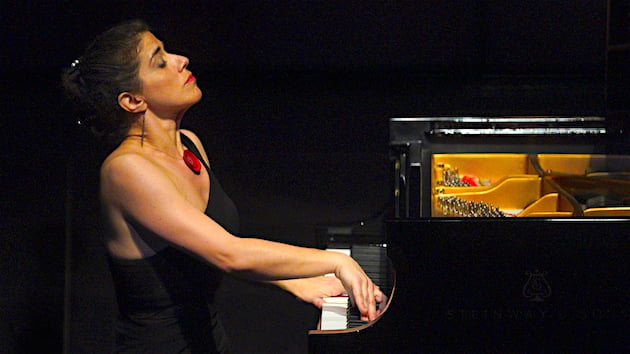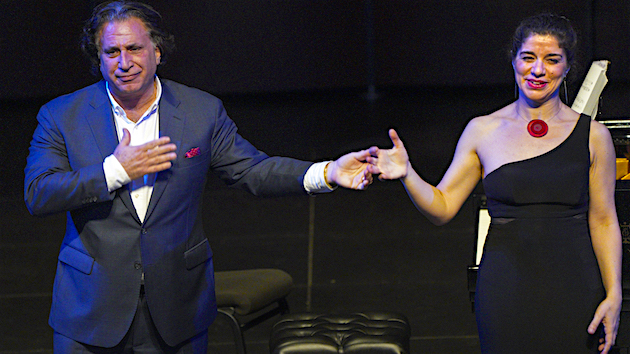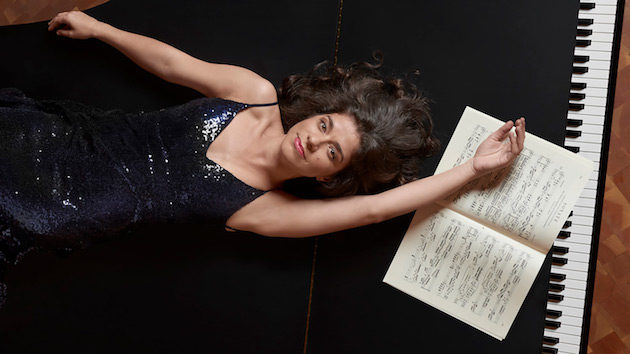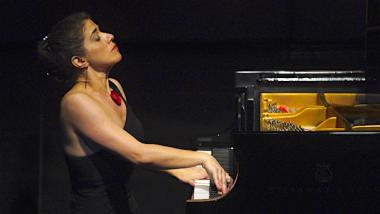
Pianist Inna Faliks gave the convincing world premiere of composer Richard Danielpour’s Eleven Bagatelles for the Piano along with a program of Chopin and Schumann, Sunday night at the Wallis Annenberg Center for the Performing Arts. A concert pianist has the task of maintaining momentum throughout an evening of solo works, and Faliks delivered.
Speaking to the audience before performing Chopin’s Polonaise-Fantaisie, Faliks described the work as incorporating two musical characters. These two personas — a Polish folk dance and a cosmopolitan Parisian fantaisie — slid in and out of each other.
The work looks forward nearly a century to harmonies which have come to be associated with jazz. It is different from much of Chopin’s other work because the melodic line is not always present and it is not the main narrative engine here. This is Chopin at his most adventurous harmonically, wandering through new chords and tonalities, light years ahead of his contemporaries.
She said the piece was “unusually searching,” even for Chopin. She did not disappoint in her performance.
The world premiere of Danielpour’s Bagatelles consists of 11 individual movements, each based on a childhood memory of the composer. The ninth movement, “Childhood Nightmare,” was dedicated to Faliks.

Danielpour’s harmonic language is fundamentally tonal, often encompassing harmonies more associated with jazz than with contemporary classical composition. His command of piano writing is beyond question, and he understands the technical aspects necessary to create changes in color Much contemporary piano music could benefit from this technical knowledge.
Danielpour’s third movement, “Waiting for Chopin,” referenced the waltz rhythms and soaring right hand melodies that we had heard in Chopin’s Polonaise-Fantaisie moments earlier. Other moments leaned towards Shostakovich and Prokofiev, and even Gershwin seemed on the tip of Danielpour’s compositional tongue.
Still, I would have liked more musical continuity between the individual movements. They felt too disconnected. Given their short individual durations, the movements tended to move on too quickly after a musical idea had been introduced. By the end of the work, I had the impression of discreet musical entities without the feeling of a whole work.

The second half of the program was devoted to Schumann’s Symphonic Etudes. These early-career variations on a theme showcased Faliks’s control brilliantly during the faster variations.
Some of the work’s variations were published after the composer’s death and Faliks described these posthumous variations as transcendent. Posthumous Variation V had a particularly poignant beauty, as a lightly leaping right hand stretches a melody that is as delicate as any that the composer would later write. Here is a young composer stretching his melodic wings, and Faliks brought the notes to life with a flexible ease as if she had improvised them herself.
A set of piano variations always presents a platform to judge how widely the pianist can alter her approach and sound. Faliks often sounded like a different performer from variation to variation — a wonderful feat.
It is fascinating that Chopin and Schumann were both born in 1811. While Schumann wrote in a voice current to his time, it can often seem that Chopin was on his own planet of harmony. This was abundantly clear on Sunday’s program.
“Would you like a fast one or a slow one,” Faliks joked with the audience when she returned to the stage for an encore. She sat down and played Liszt’s furiously fast La Campanella, based on the violin music of Paganini. It proved to be a highlight of the night.




